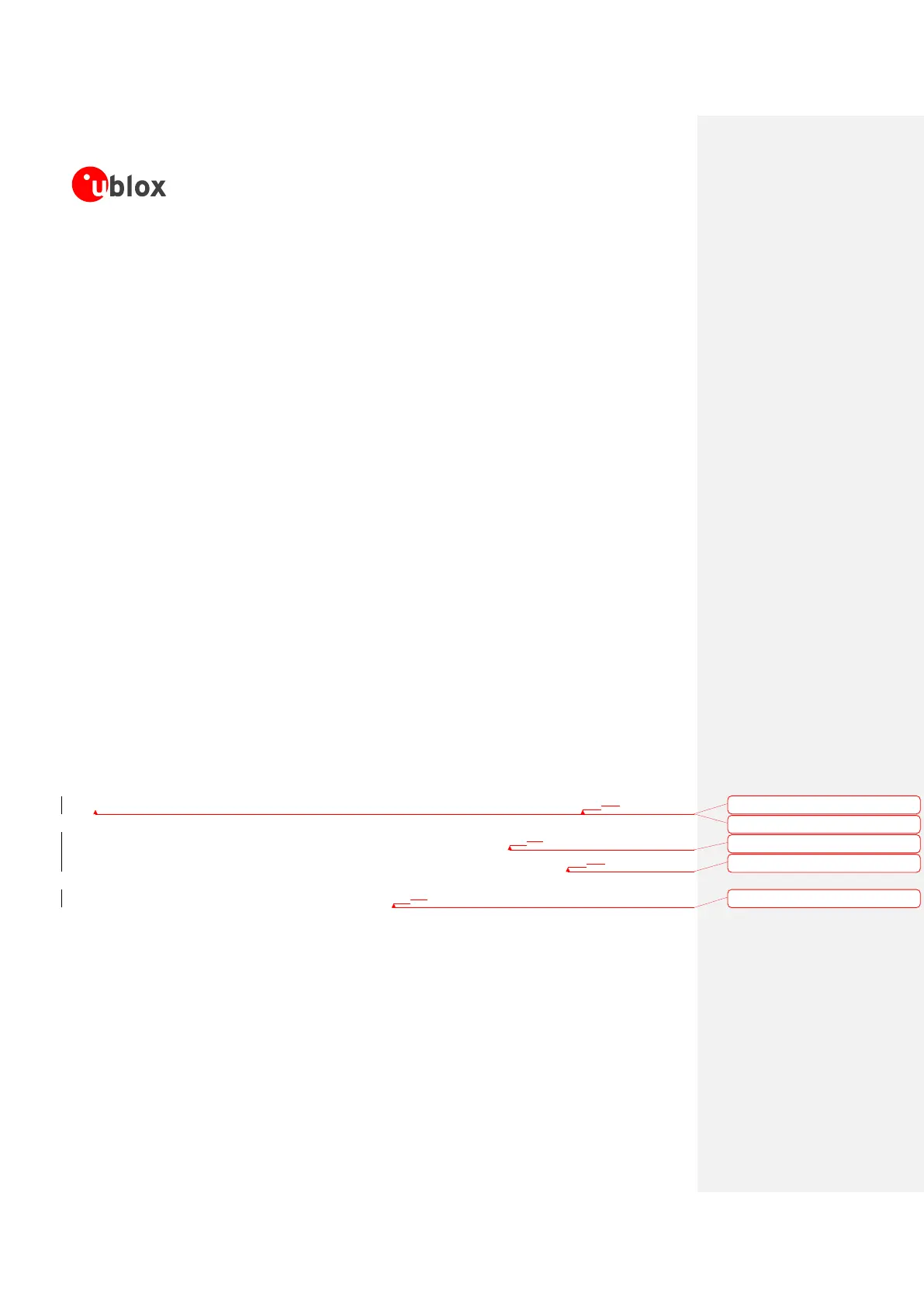SARA-G3 series - System Integration Manual
UBX-13000995 - R06 Objective Specification Design-in
Page 156 of 218
Provide a ground plane as wide as possible on the application board
Optimize antenna return loss, to optimize overall electrical performance of the module including a
decrease of module thermal power
Optimize the thermal design of any high-power component included in the application, as linear
regulators and amplifiers, to optimize overall temperature distribution in the application device
Select the material, the thickness and the surface of the box (i.e. the mechanical enclosure of the
application device that integrates the module) so that it provides good thermal dissipation
Force ventilation air-flow within mechanical enclosure
Provide a heat sink component attached to the module top side, with electrically insulated / high
thermal conductivity adhesive, or on the backside of the application board, below the wireless module
For example, after the installation of a robust aluminum heat-sink with forced air ventilation on the back
of the same application board described above, the Module-to-Ambient thermal resistance (Rth,M-A) is
reduced up to the Module-to-Case thermal resistance (Rth,M-C) defined in the
SARA-G3 series
Data
Sheet
[1]. The effect of lower Rth,M-A can be seen from the module temperature increase, which now can
be summarized as following:
~1 °C during a GSM voice call (1 TX slot, 1 RX slot) at the maximum TX power
~2 °C during a GPRS data transfer (2 TX slots, 3 RX slots) at the maximum TX power
Beside the reduction of the Module-to-Ambient thermal resistance implemented by the hardware design of
the application device integrating a SARA-G3 series module, the increase of module temperature can be
moderated by the software implementation of the application.
Since the most critical condition concerning module thermal power occurs when module connected-mode is
enabled, the actual module thermal power depends, as module current consumption, on the radio access
mode (GSM / GPRS), the operating band and the average TX power.
A few software techniques may be implemented to reduce the module temperature increase in the
application:
Select by means of AT command (refer to the
u-blox AT Commands Manual
[2][2], +UCLASS
command) the module’s GPRS multi-slot class which provides lower current consumption (refer to
current consumption values reported in the
SARA-G3 series
Data Sheet
[1][1])
Select by means of AT command (refer to the
u-blox AT Commands Manual
[2][2], +UBANDSEL
command) the operating band which provides lower current consumption (refer to current consumption
values reported in the
SARA-G3 series
Data Sheet
[1][1])
Enable module connected-mode for a given time period and then disable it for a time period enough
long to properly mitigate temperature increase
Formatted: English (U.S.), Hidden
Formatted: English (U.S.)
Formatted: English (U.S.)
Formatted: English (U.S.)
Formatted: English (U.S.)

